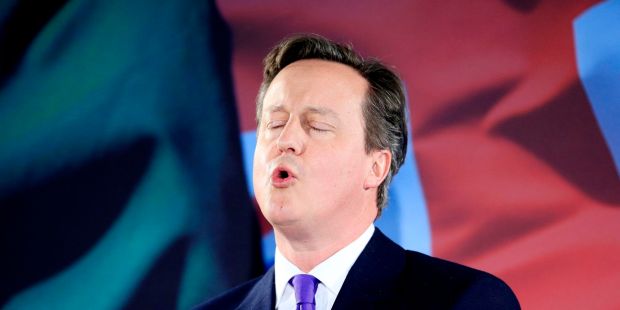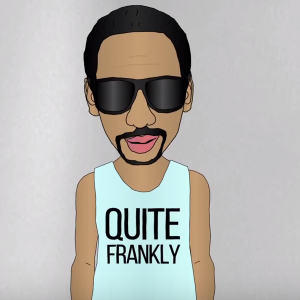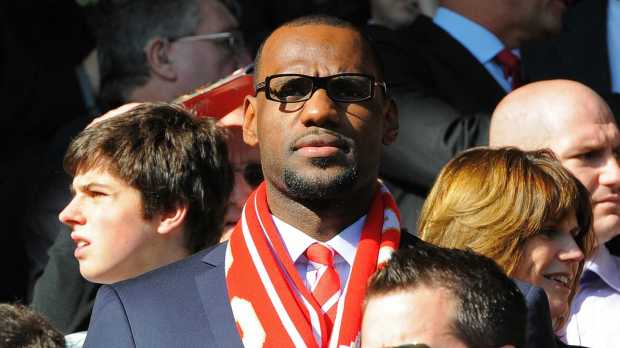Basketball, T-Shirt Praxis, and Crafted Storytelling
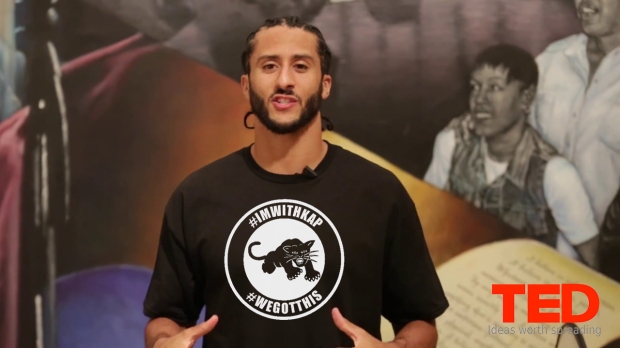
Major sports are now transmitted by satellite to global audiences. The commercial messages accompanying the broadcast, ringing the stadia, and often worn on the uniforms of the athletes constitute a concerted assault of corporate marketing values on global consciousness. The envelopment of professional and amateur sports for transnational corporate marketing objectives and ideological pacification and control is not a patented American practice, limited exclusively to U.S. companies. It is, however, carried to its fullest development in the United States[1].
It’s that time of year again. American football players (along with other assorted sportspeople and posturing opportunists) are performing revolutionary acts at an unprecedented rate! Standing shoulder to shoulder with ruling class millionaires, arms linked in heart-warming unity, professional athletes are once more using their platforms to bring people together and make a difference.
The major organisations now jostle for the title of “most socially conscious professional sports league,” and, smelling opportunity, Adam Silver has descended like a gangly, besuited vulture, offering in an open letter to help his players “figure out the most meaningful way to make [a] difference[2]” (it’s wearing t-shirts and linking arms, in case you were wondering).
Like all sports leagues, the NBA—as its players and commissioners never tire of reminding us—is a business. “In the United States,” Herbert I. Schiller wrote, “practically no sports activity remains outside the interest and sponsorship of the big national advertisers”—and these include government agencies. Teams are owned by the very richest of the rich, and unthinkable sums of money are spent on advertisements of various sorts, from regular TV commercials, to branding, to Department of Defence propaganda, to God knows what else. With this in mind, we ought to consider the question of what, aside from jerseys and t-shirts, we are being sold. So, let’s investigate.

Just a normal basketball game in a not-fascist country.
From the very beginning of this tiresome saga, Colin Kaepernick proved himself to be a faithful and unashamed propagandist for the US armed forces, and for American exceptionalism in general. When asked to clarify his thoughts on the military in August last year, Kaepernick made the following remarks:
I have great respect for the men and women that have fought for this country. I have family, I have friends that have gone and fought for this country. And they fight for freedom, they fight for the people, they fight for liberty and justice, for everyone … [Kneeling during the national anthem is] a freedom that men and woman that have fought for this country have given me this opportunity by contributions they have made … I know a lot of people’s initial reactions thought it was bashing the military, which it wasn’t. That wasn’t my intention at all[3].
Kaepernick’s former teammate and fellow grovelling kneeler Eric Reid reemphasised the pair’s reverence for murderous American soldiers in a recent op-ed for the New York Times, explaining that he “wanted to be as respectful as possible,” and that they “chose to kneel because it’s a respectful gesture.” He continues:
It baffles me that our protest is still being misconstrued as disrespectful to the country, flag and military personnel. We chose it because it’s exactly the opposite. It has always been my understanding that the brave men and women who fought and died for our country did so to ensure that we could live in a fair and free society, which includes the right to speak out in protest.
The pro-empire orientation of Kaepernick and his copycats has always left room for cross-pollination with other ongoing psyops and enabled the US military to boost its image in ways other than the crude displays that are typically associated with American sports (mindless flag reverence[4] and tasteless pageantry, recruitment ads, collaborative PR performances, and so forth). Thanks to Kaepernick’s “socially conscious” credentials, bloodthirsty imperial soldiers can, by association, now posit themselves as sympathetic characters who share our concerns, and even as revolutionaries! They’re cool and subversive, and we kneel with them!
The prophet Mani recognised the power of images in spreading propaganda way back in the third century CE, and the best propagandists today are well aware of this utility. Kaepernick’s CIA-endorsed “protest” may be short on theory and on focus (“there’s a lot of things that need to change, a lot of different issues that need to be addressed … it’s really hard to lock down one specific thing that needs to change currently”), but it produces endless iconic and inspirational imagery! Look at the images! Wear them on a t-shirt. Are you not empowered?
By clearly emphasising this supposed distinction between US police (who are temporarily bad and racist) and US soldiers (who are eternally good and noble), Kaepernick promotes a myopic understanding of contemporary America, according to which racist policing is not an intended and inevitable outcome of capitalism, but rather an alarming deviation from an otherwise presumed American exceptionalism, a problem which can be treated and dealt with in isolation through kneeling and t-shirt wearing, “raising awareness” and “having conversations.” But as David Gilbert observed in 2001,
there is a complete correlation over the past twenty years between the greatest ever recorded shift of wealth from the poor to the rich and our skyrocketing prison population. The dual needs of containment and scapegoating are clearly expressed in the racial character of American justice.
Kaepernick’s belief that American cops can be reformed or “held to account” without really understanding in the first place why they consistently exhibit racist behaviour amounts, in other words, to a liberal complaint (as opposed to a radical analysis). American police do not intend to serve and protect the working class, and it is crucial to do away with any belief in a community of interests—and thus any chance of productive dialogue—between cops and the people they brutalise, imprison, and execute. You cannot condemn American cops without also condemning American capitalism.
But Kaepernick does more than just pose and sell t-shirts—he’s an activist. Eric Reid vouches for him, pointing out in his op-ed that Kaepernick is “a man who helped to orchestrate a commercial planeful of food and supplies for famine-stricken Somalia.” Kaepernick and the “Love Army” (a subliminal command as well as a name?) did indeed deliver 60 tonnes of food to hungry Somalis this year, and that’s all very nice. But why does Somalia suffer such terrible famines? Kaepernick doesn’t say. But I’m going to tell you!
“These people, they have no food.”
Somalia is a victim of (you guessed it) US imperialism (or, as Kaepernick calls it, “politics”). The very soldiers whose deeds Kaepernick and his cop friends love to celebrate have murdered dozens of Somalis this year alone by the most conservative estimates. Thousands of Somalis have been killed (and hundreds of thousands displaced) by US invaders since 2007 in a rarely-publicised war that has been going on for decades. Famines have occurred with ever-increasing frequency and severity since the United States instigated this war, and this is no coincidence:
A country that has been deprived of any civil peace and stable government by the repeated meddling of imperialism over a period of decades, a country whose economy has been destroyed by IMF loan sharks, a country whose fishing industry has been wiped out by giant factory ships deployed by monopoly capitalist poachers, and whose fishermen have been transformed into pirates, is not well-equipped to deal with the consequences of major drought. Whilst the drought is, in some measure, a natural phenomenon, the famine is entirely man-made: the consequence of the decades of imperialist meddling which have effectively sabotaged any hope of peace and order for the Somalis.
To borrow Kaepernick’s own words, there’s “a social responsibility that we have to be educated on these things and talk about these things,” and “when you have the knowledge of those things you can make an educated decision on what you really feel and what you really stand for.”
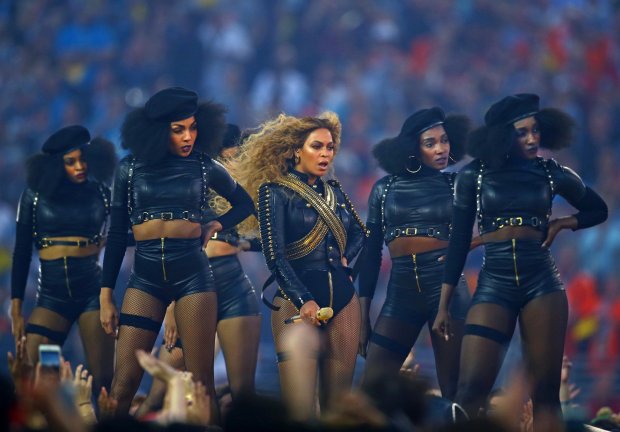
During the lifetime of great revolutionaries, the oppressing classes have visited relentless persecution on them and received their teaching with the most savage hostility, the most furious hatred, the most ruthless campaign of lies and slanders. After their death, attempts are made to turn them into harmless icons, canonise them, and surround their names with a certain halo for the “consolation” of the oppressed classes and with the object of duping them, while at the same time emasculating and vulgarising the real essence of their revolutionary theories and blunting their revolutionary edge[5].
Colin Kaepernick is often credited with raising awareness and starting a conversation, but this is giving him too much credit. He is more than happy to strut about in t-shirts branded with images of revolutionary figures (Malcolm X, Huey Newton, Fidel Castro[6]), but when it comes to discussing the topics with which these great leaders spent their lives grappling, Kaepernick has nothing to say. His t-shirt praxis is offensive not just because it is dishonest, but because it contributes to the debasement of powerful revolutionary icons and ideas. The late poet Amiri Baraka once prophesised that Malcolm X’s face would appear on a t-shirt worn by Colin Kaepernick:
There is, of course, the syndrome Lenin spoke about when he said that once opponents of the bourgeoisie are dead the rulers transform these class enemies into ciphers or agreeable sycophants of Imperialism (however “askew” they might have “seemed” in life) who are now “rehabilitated” all the way into being represented as the very opposite ideologically of what they actually were in life.
In particular, Kaepernick seems intent on “rehabilitating” the Black Panther Party, whose 10 point programme he has caricatured and had printed on t-shirts. The original Panther Programme was a substantial list of demands, while Kaepernick’s “10 inspirational sentences” have the air of a friendly cop reading you your rights: “you have the right to be brilliant; you have the right to be courageous”—fuck off. Black Panthers, evidently, can be “radically audacious” backup dancers sharing a stage with Coldplay; they can be obsequious grovelers; and they can be Marvel super heroes. They cannot, however, be revolutionaries.
But enough about Kaepernick. He’s old news, and his feckless demonstrations were on the verge of disappearing down the memory hole until former NBA cameraman and current US President Donald Trump gave this dying story a much-needed shot in the arm. Trump’s remarks have provoked a renewed frenzy of insipid jingoism from athletes and pundits alike. The problem with Trump, you see, is that he’s not a patriot. His presence disgraces the White House, which until last year was a monument to freedom, universally respected and beloved.
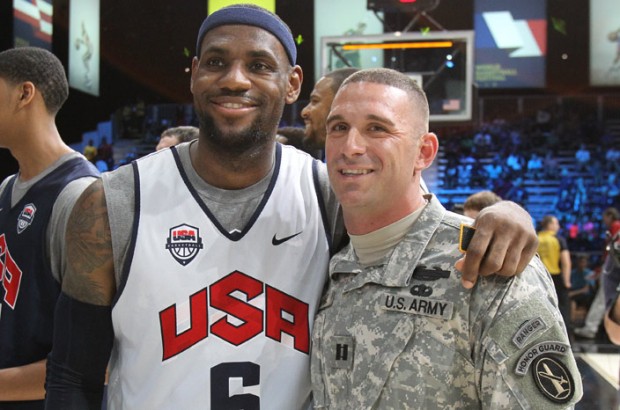
“We know this is the greatest country in the world. It’s the land of the free[7].”
Trump, like racist police brutality, is un-American, and bending over in order to revere the US military is not only the best way to protest these things, it’s the American way. Stephen Curry is a real American. So is Bill Russell. Are you?
Cops and soldiers are now joining in these pathetic displays to demonstrate their commitment to American Values, but this is not evidence that Kaepernick’s “protest” has been “ruined” or subverted by opportunists. “Empty platitudes and gestures aimed at pleasing and comforting everyone” were all there ever was to this brain-dissolving spectacle. The whole thing is, I think, an elaborate recruitment ad for the US military (a more ambitious and interactive advert than we’re used to seeing, but an advert nonetheless). Today, the whole world is an advert. Advertising is no longer about straightforward product placement, brand sponsorship, and commercial breaks; advertising today consists of “compelling narratives” and “crafted storytelling” directed at “highly valuable and engaged audiences.” The BBC smuggles ever more subtle and sophisticated advertising into its news broadcasts, boasting of its ability to “deliver content solutions built on compelling narratives that engage audiences across the globe.”
“Welcome to the science of engagement.”
With the DoD throwing millions of dollars at professional sports leagues, it’s not at all wild to suspect that something a little more creative than a bit of flag waving is taking place. All it takes is “matching the content strategy of brands [i.e. the DoD] to issues [i.e. #BlackLivesMatter], motivating audiences anywhere on the planet.” We’re not only being sold products, we’re being sold wars, and we’re being sold a belief in capitalism itself.
Inevitably, Kaepernick will sign with some NFL team or other, and this will be hailed as a great victory for America. Like Chelsea Manning, who was banished and then forgiven, Colin Kaepernick will be welcomed back into the fold and celebrated for his courageous struggle. Kaepernick may mobilise people, but he will never organise them[8]. Instead we will learn an important lesson: that change comes from the top down, led by millionaire capitalists performing gestures on the stage, and not from the bottom up by the likes of you and I. Mission accomplished!
As Gaddafi wrote, “[t]hose who make their own life do not need to see how life takes its course through watching the actors on stage or other theatres.” We should always remain critical when observing media-appointed spokespeople and celebrity revolutionaries, especially those that appropriate and pervert the images and teachings of real anti-imperialist heroes. There have been principled and admirable athletes and entertainers, and they deserve to be taken seriously, but they tend to receive quite different treatment to that enjoyed by Kaepernick. Tupak Shakur, for example, was a black radical, and for that he was assassinated by the FBI. By contrast, Colin Kaepernick receives words of solidarity from the former Director of the CIA.
Thank you for reading, and death to the USA.
[1] Paraphrased from Herbert I. Schiller’s essay Not Yet the Post-Imperialist Era.
[2] Amusingly, this letter was initially reported as “encouraging players to speak out on social issues and not be afraid like NFL players,” but in a subsequent memo the league has made it clear that all players had better stand up straight during anthem performances.
[3] If you think he’s being cautious and is simply worried that by condemning the NFL’s military sponsors he runs the risk of losing his job or endorsement revenue, consider his own remarks from this same interview: “Those are things I’m prepared to handle … I can live with that at the end of the day.” He no longer has an NFL job to lose, anyway. He’s free to set the record straight whenever he likes.
[4] James Johnson: “Without the military there would be no freedom to even play basketball.” What?
[5] Lenin, State and Revolution.
[6] None of these three had a high opinion of the US military, in case you were unsure.
[7] LeBron actually said this.
[8] Kaepernick doesn’t need your help: “This isn’t something I’m going to ask other people to put their necks out for what I’m doing. If they agree with me and feel strongly about it then by all means I hope they stand with me. But I’m not going to go and try to recruit people and be like ‘Hey, come do this with me’ because I know the consequences that come with that and they need to make that decision for themselves.”








